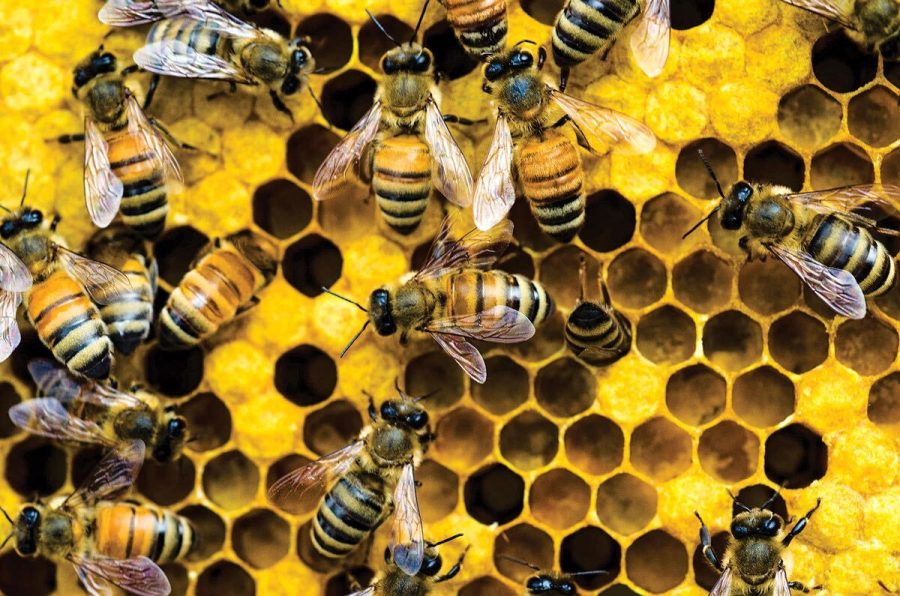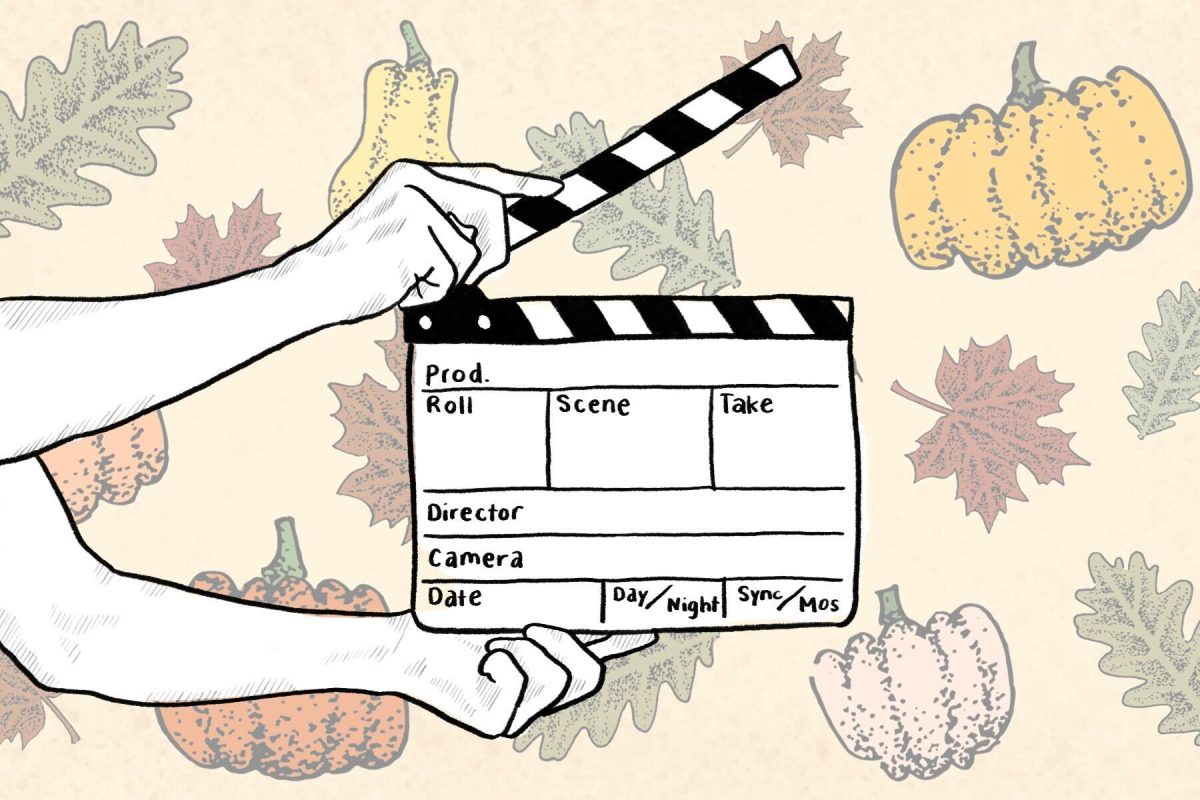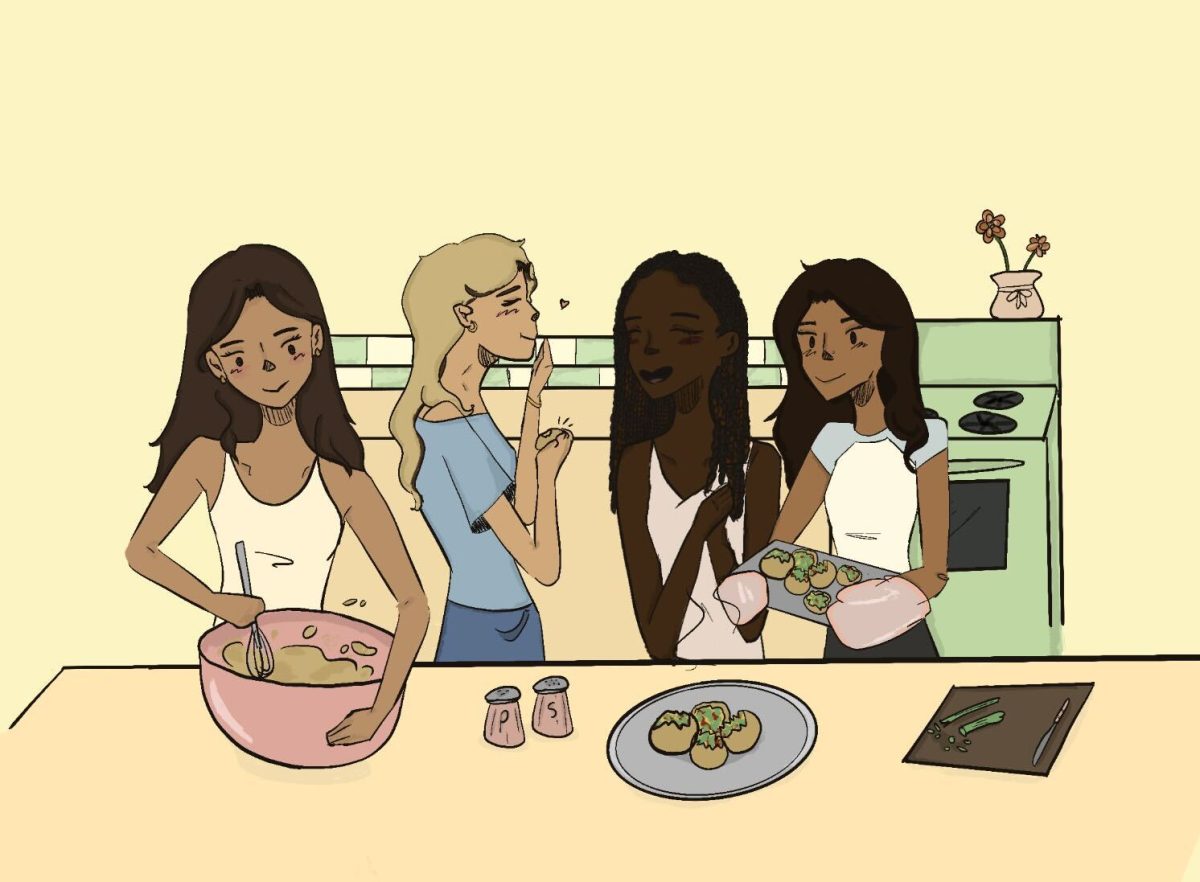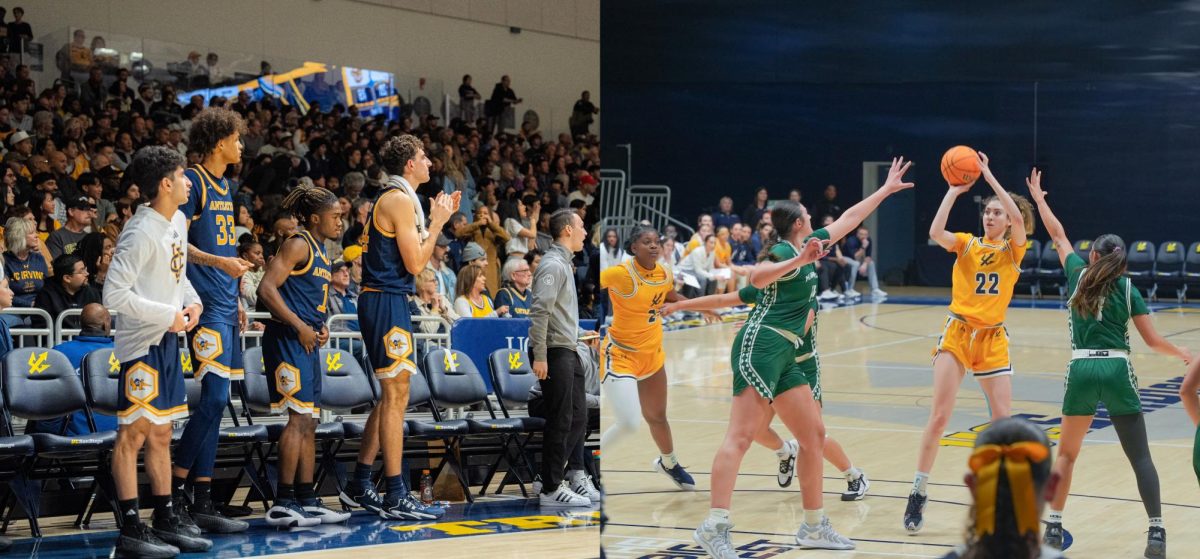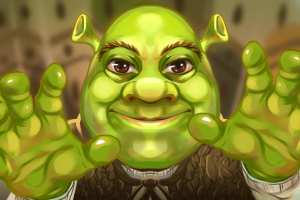Groundbreaking Research Finds Honey Bee “Waggle Dance” Used for Complex Communication
Photo by Marsha Miller/ UCSD Guardian
Apr 10, 2023
Honey bees are the only insects to engage in complex, social learning, according to recent groundbreaking research. They engage in a sophisticated method of communication in the form of a “waggle dance,” through which they convey distance, direction, and the quality of resources to their nestmates.
This dance, a figure-eight motion only seen in worker, or female, honey bees, is a complex language that expresses information about the direction and location of food resources, water, and pollen, explained researcher Dr. Ken Tan, professor of Chemical Ecology at the Xishuangbanna Tropical Garden, Chinese Academy of Science.
“The waggle dance is, just like with human beings, body language,” Tan said. “We use body language to express meaning, to express information, or to express knowledge. More waggle means longer distance, while a small waggle means a short distance.”
Honey bees use the angle of their bodies to communicate the direction of these resources and an excited dance means food resources are of high quality, according to Tan.
“Usually, the bee is dancing on a vertical surface in a completely dark nest surrounded by hundreds of bees,” explained researcher Dr. James Nieh, professor of Ecology, Behavior, and Evolution at the UC San Diego School of Biological Sciences. “When the bee is dancing straight up, inside the nest, meaning that she’s waggling straight up, she’s telling other bees, ‘Go in the direction of the sun to find food.’”
Though they studied just one species of the honey bee, the European honey bee (Apis mellifera), this study has expanded our knowledge about all social insects. In fact, this is the first evidence of social learning of communication in any insect, and honey bees are the only animals other than humans to relay information about distance.
“What’s exciting is that this is the first known example of such complex language acquisition, social learning [of communication], in a social insect or any insect,” Nieh said. “Previously I think most people thought that bees just were born with the ability to communicate and that this was all programmed and hardwired.”
Nieh and his fellow researchers found the question of why some animals are born with innate language skills while others must learn socially to be of particular interest, which is why they chose to study language communication, acquisition, and learning among honey bees.
“We’ve long been fascinated, my coauthors and I, with this idea of why [learning] is … important,” he said. “Imagine if we as humans didn’t have to learn our language — we were just born with the ability to speak English or Spanish. There are animals that can do that, that are born with the innate ability to know and produce their correct species-specific language.”
Honey bees are animals that are born both with the innate ability to communicate by producing a waggle dance from very early in life, and the need to learn in order to improve their signaling. Through social learning from more experienced adult bees their communication skills become more precise. According to their paper, social learning is the ability to learn through observation of and interaction with another being.
“This is useful when complex behaviors must be tuned to specific environmental circumstances or honed by practice or social shaping,” the paper noted.
The ability to communicate at a young age and the need to finetune that ability is comparably found in human infants, who innately know how to babble, but grow to hone their language skills from adults. Similarly, the waggle dance is shaped by social feedback and grows more advanced as honey bees mature. Moreover, Nieh and Tan explain that just as humans learn language better the younger they are, so do honey bees.
“The language that they have is largely innate, but it can be modified by learning and, more importantly, it also seems to have a critical phase of early language acquisition,” Nieh said. “They benefit and do it more accurately if they have older bees, teachers essentially, to follow and learn from.”
Notably, the waggle dance is not seen in other types of bees, like bumble bees, Tan explained. Out of the nine different species of honey bees that are recognized, the waggle dance is seen in all, however they each have different “dance dialects” dependent on the habitats in which they live.
“A dance dialect boils down to one thing: how… that particular species communicates location. Each species has a slightly different way of doing it, which we think is related to the environment in which they operate,” Nieh explained. “You have species that are adapted to, for example, work in rainforests or other species that may work in a more arid, more desert-like climate.”
Importantly, according to Nieh, in the wake of climate change, this research suggests a potential reason to be optimistic; bees may be better at rapidly adapting to changes in environments than previously understood.
“If honey bees are able to adapt their communication, even despite large changes in resource availability and in their habitat, it suggests … that they have a better survivability than we thought and that maybe there’s also a bit more hope for them.”
Tan, who has worked with bees for 40 years and cares for his own hives as a hobby, hopes this research will drive more interest in the lives and viability of honey bees in a changing climate. He stresses the importance of pollination for agriculture, habitat maintenance, and the appreciation of honey bees.
“I love honey bees,” said Tan, “I think they are really magic. Bees are really smart. They’re beautiful … the most beautiful living beings … People should love honey bees. If we learn more and more about them, we’ll learn more [about] how to protect them.”
Photo courtesy of C&EN


